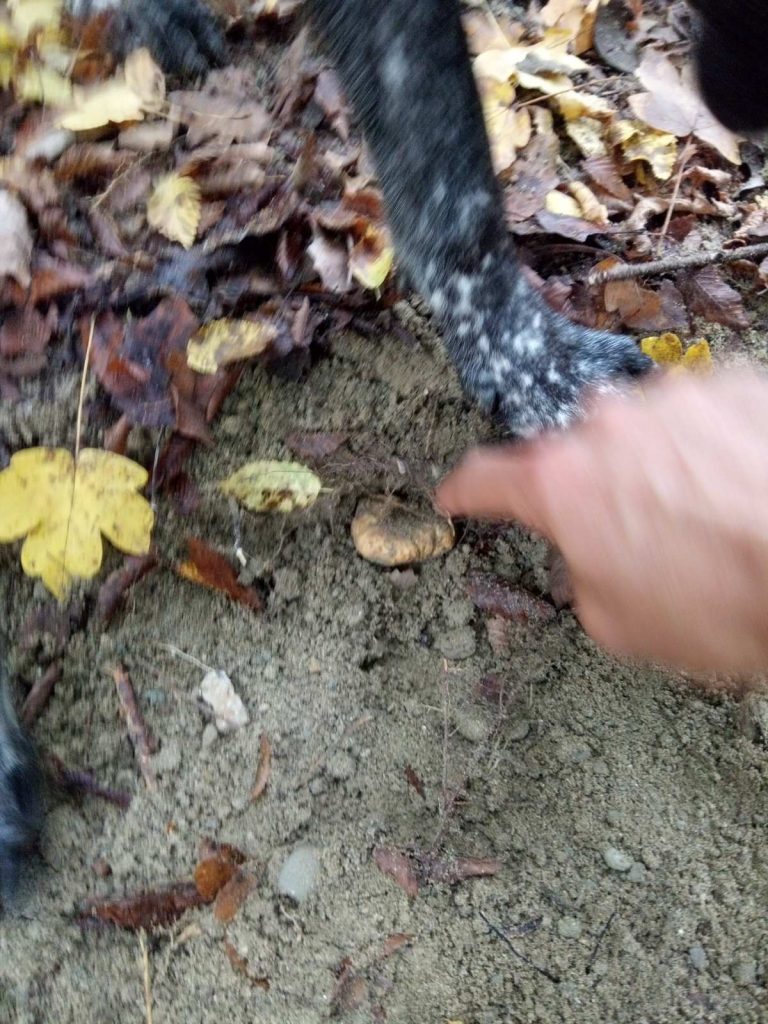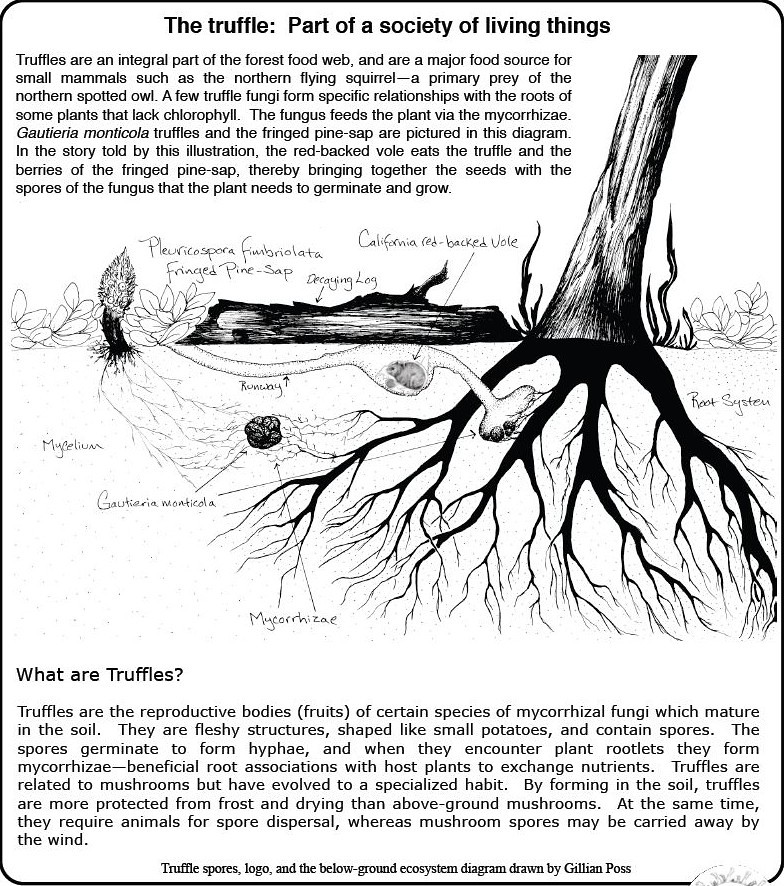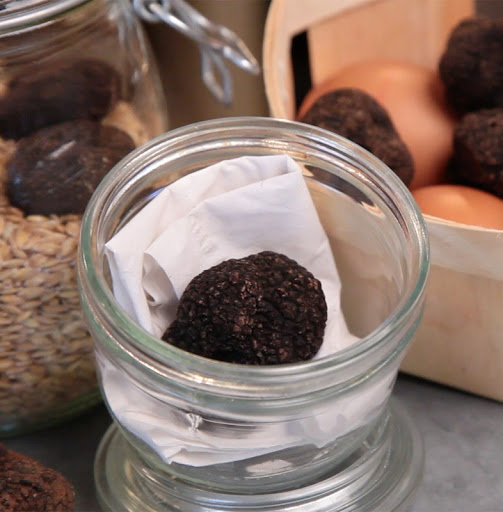You have heard rumours that truffles grow in your part of the world and want to get your hands on some. You know that dogs are conventionally used to find truffles but how many people own a trained dog? Isn’t there another way? Well, yes there is and it is fairly simple and very inexpensive. Truffles can be unearthed using nothing more sophisticated than a common rake. But hold on right there …..before anyone rushes off to the garden store to buy one, let’s talk very quickly about raking – how it works and its consequences.

If you want to start off as a truffle-raker, there are several YouTubers and bloggers promoting this style of hunting. They will tell you to get a general idea of where truffles might grow. You will learn that you need to consider several factors such as the trees under which truffles grow and the age of said trees. Other truffle indicators are season, altitude, soil type and plants growing on the surface of the ground. Then you will be told to arm yourself with a rake, probably with a short handle to begin with. Now you are ready. There is no sure way of knowing where and when you will find a truffle -this is a rather haphazard process. Be patient, if you keep on scraping and digging at the earth for long enough something is bound to turn up.

When truffle hunters use a dog, the animal follows the scent to the precise location of a mature truffle. The dog begins to dig and then the hunter takes over, carefully unearthing the truffle. This process is very delicate as hunters never want to break a truffle. But there is a more important reason for their extreme care – it is vital to limit any damage to the ground where the truffle grows. This means that the surrounding earth should be disturbed as little as possible. The hole left behind when the truffle is removed must be filled quickly and meticulously and finally the litter layer (leaves etc) must be restored. Truffles are rare, they grow in delicate symbiosis with other plants and their roots in an increasingly fragile ecosystem. However, when treated with respect, a patch which produces truffles will go on doing so season after season.

The practice of raking is extremely destructive to the truffle environment. This indiscriminate turfing up of the ground breaks the sensitive mycelia. These are the thin fungus strands which would eventually have produced more truffles. Raking can also alter the profile of the soil and it disrupts the forest litter layer micro environment which the truffle spores need for their initial development. In short, raking has such a detrimental effect on truffle yields that entire areas have had future generations of truffles wiped out.

If you have a rake then you don’t need the smell of a truffle to locate it. This highly prized smell is a key part of the reproductive cycle of a truffle. Since truffles are hypogeous (hypo = under, geous = ground) fungi, their spores (‘seeds’) cannot be dispersed on the wind. Instead truffles rely on animals like badgers and squirrels to spread these spores. When the truffle has matured, its spores are fully developed and only then will it start to emit volatile compounds – a strong aroma to attract animals. This smell helps the animal to find the truffle, eat it and the spores then disperse via the animal’s feces. Uneaten truffles remain buried. These wither, decay and release their spores underground where they germinate and produce new mycelium.

Immature truffles are not yet ready to reproduce and so they do not have a strong smell. It is this perfume that gives the truffle their culinary value and so an unripe truffle is worthless. When truffles are raked, they are unearthed indiscriminately with no regard to their maturity. These truffles are not allowed to propagate and to make matters worse they are practically inedible. They can, however, be used to scam unsuspecting consumers. It helps that unripe truffles look no different from their aromatic counterparts. These worthless juveniles can be stored for a few days with ripe truffles and will ‘absorb’ some of the smell of the mature truffles. To the buyer everything seems fine, the truffle smells great for an hour or so. When it comes to serving it, the truffle will be a huge let-down and once again the familiar cry of ‘I don’t know what all the fuss is about truffles’ echoes around.
Some other hunters claim they do not use rakes. They can find truffles by following flies. I would imagine that is a real hit-and-miss practice. So why not just get yourself a dog especially if you know there are truffles in the area? Even if you can’t train a dog or borrow one it makes sense to buy a truffle dog. If you are serious about truffling, you will recover your expenses within a couple of seasons
If you have plenty of time on your hands and good eyesight follow the flies.
Don’t get me wrong, it makes perfect sense that people want to get hold of truffles. Hunting is an exciting hobby for people who love being outdoors. Other hunters love the taste of truffles and want to eat like champs knowing that without hunting they could not afford to eat truffles. However there is a small group of rakers who care neither for nature nor for the exquisite taste of a truffle. This group of vandals have had their imagination fueled by stories of improbable prices and imagined wealth. They rake in full knowledge that their actions are damaging the environment and putting the future of the truffle in serious jeopardy. They also know that immature truffles have no smell and thus are worthless. This post was not for them
Not everyone can afford to buy a trained truffle dog. There seems to be a prevalent misconception though that a truffle dog has to be a certain rather expensive breed. The lagotto is a good truffle hunter but by no means the only skilled truffle dog. All dogs have an amazing sense of smell meaning you can train virtually every young dog to find truffles. Our best dog unearths around 15 kilos of white truffle every season and she is a mongrel. So now, if you want to retire your rake you might like to know that we are working on a series for this blog and our YouTube channel. It is a step-by-step guide showing absolute beginners how your dog can become a successful truffle hunter with you by its side. You will see that it is not difficult provided that you have patience, love dogs and have an internet connection. It won’t cost you much either, the equipment you need should not cost you much more than 50 euros….. and you’ll be helping precious truffles survive so that future generations can enjoy them too! Watch this space.





